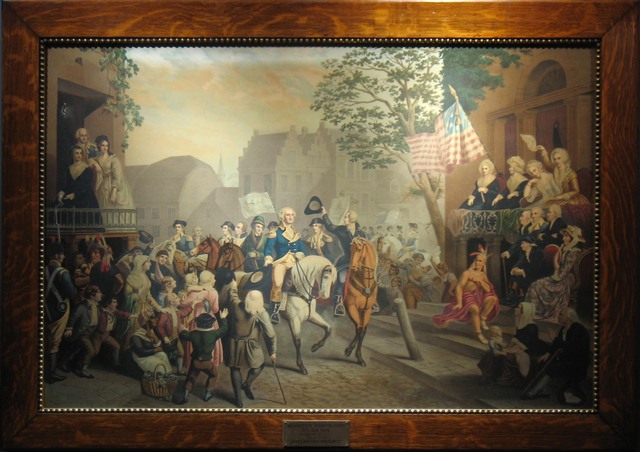New York Held Prisoner, "Revolution and the City" Opens at Fraunces Tavern® Museum
July 02, 2010 (PRLEAP.COM) Education News
It seems hard to believe today but from 1776 to 1783 – for virtually all of the Revolutionary War – New York City was held captive by the King of England. For some New Yorkers this was just fine, but for others who opposed the King it meant either abandoning their beloved City or staying behind and finding ways to continue the fight. With "Loyalists" on one side and rebellious "Patriots" on the other-and the British Army and Navy in between-it made for perilous times. The story of this forgotten New York will be revealed in the exhibit, "Revolution and the City" which opens at Fraunces Tavern Museum on July 10, 2010.New York City was turned into a sort of military barracks during the American Revolution. Some Patriots who opposed the King's laws were jailed, while known Loyalists' homes were sabotaged. All churches except Anglican, Methodist and Moravian were used as prisons, barracks, hospitals, theaters or stables. New York Harbor was filled with overcrowded prison ships leading to the deaths of some 18,000 people.
Fraunces Tavern itself was at the heart of many incidents during the occupation. The Sons of Liberty plotted the New York Tea Party under its roof as well as other escapades. Its proprietor, Samuel Fraunces, passed overheard military intelligence on to General Washington. When the British finally evacuated the City there was much rejoicing in the Streets as General Washington victoriously rode back into town. Governor Clinton held a great banquet at Fraunces Tavern to celebrate. Days later Washington bade his famous emotional farewell to his officers there as well.
The most notorious horse's tail in the history of the War will be on exhibit, courtesy of the New-York Historical Society. For years on Bowling Green had been a statue depicting King George proudly astride his steed. After a public reading of the Declaration of Independence on July 9, 1776, Patriots celebrated by pulling the statue down. From there much of it appears to have been dragged to Connecticut where it was melted into musket balls for firing at the British. The tail, however, survived-supposedly rescued by a Loyalist and hidden away.
Also on exhibit will be a cannonball similar to the 18-pounder that crashed through Fraunces Tavern's roof on August 24, 1775. (The one on display is actually a relic of the Battle of Washington Heights in 1776.) There will be numerous other artifacts and artwork bringing this compelling time of history into focus including a rare "anastatic facsimile" of the Declaration of Independence dating to the 1840s-one of only two known copies. Visitors will also be able to see the Museum's other exhibits including an opportunity to step into the Long Room – the spot where George Washington bade his famous farewell.
On July 17, the Museum will supplement "Revolution and the City" with the reopening of its Flag Gallery featuring new displays presenting the evolution of the American Flag from 1775 to today, samples of American regimental flags from the Revolutionary War, and a special section devoted to maritime flags.
- About Fraunces Tavern -
Fraunces Tavern was built in 1719 as an elegant residence and purchased in 1762 by tavern-keeper Samuel Fraunces. The Tavern played a significant role in pre-Revolutionary War activities and later housed early U.S. government offices of the Departments of War, Treasury and Foreign Affairs (today's State Department). It is best known as the site where General George Washington bade farewell to the officers of the Continental Army on December 4th, 1783.
In 1904, the Sons of the Revolution in the State of New York purchased the Tavern, saving it from the wrecking ball. A restored Fraunces Tavern was opened to the public in 1907 featuring a Museum and Restaurant. In 2008 Fraunces Tavern was added to the National Register of Historic Places.
Fraunces Tavern® is a registered service mark of Sons of the Revolution in the State of New York, Inc., a not-for-profit corporation, instituted in 1876 and incorporated in 1884.
